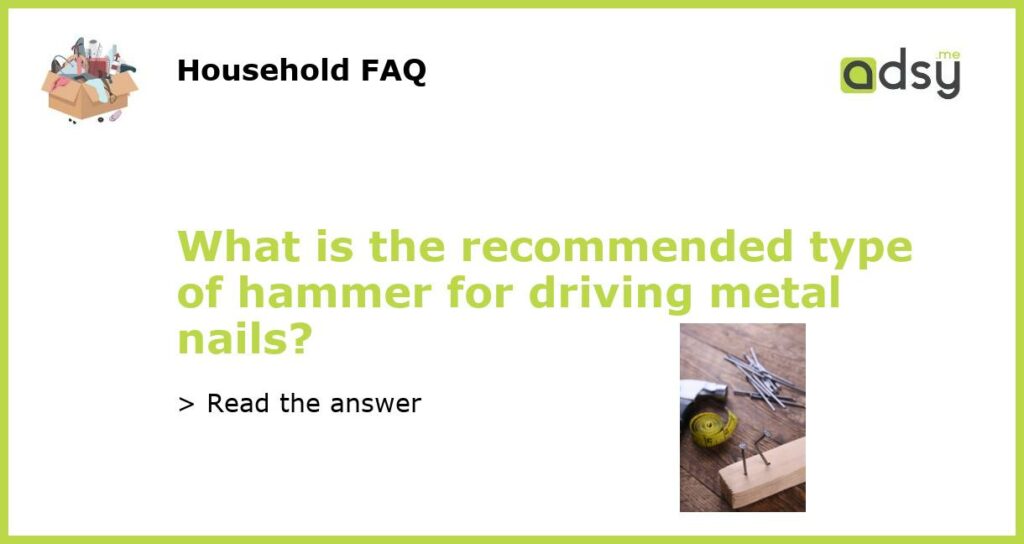The importance of using the right hammer for metal nails
When it comes to driving metal nails, using the right hammer is crucial to ensure a smooth and efficient process. The type of hammer you need will depend on the type of nail you are using and the surface you are nailing into.
Choosing the right hammer for metal nails
For most metal nails, a ball-peen hammer should do the trick. Ball-peen hammers have a flat surface on one side and a rounded, ball-like surface on the other, making them versatile for metal work.
However, if you are working with thinner or smaller nails, a lighter hammer may be more appropriate to avoid bending or damaging the nails. In this case, a smaller ball-peen hammer or a framing hammer may be a better option.
Consider the surface you are nailing into
The surface you are nailing into should also be taken into consideration when choosing a hammer. If you are nailing into thin metal or a fragile material such as drywall, a lighter hammer and a delicate touch may be necessary to avoid damaging the surface.
On the other hand, if you are nailing into a sturdy metal surface, a heavier hammer may be necessary to get the job done quickly and efficiently without damaging the surface or the nail.
Caring for your hammer
Lastly, it’s important to properly care for your hammer to ensure its longevity and effectiveness. Keep your hammer clean and dry, and store it in a safe, dry place when not in use. Avoid using your hammer to strike surfaces other than nails, as this can lead to damage or wear on the hammer’s surface.
Choosing the right hammer for metal nails involves considering the type of nail and surface you are working with. A ball-peen hammer is a versatile option for most metal nails, while lighter hammers may be necessary for thinner or smaller nails. It’s important to use a delicate touch when nailing into fragile surfaces, and a heavier hammer for sturdier metal surfaces. Properly caring for your hammer will ensure its longevity and effectiveness for years to come.






